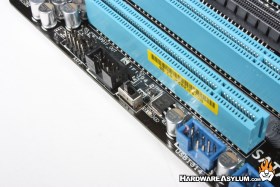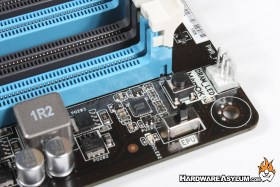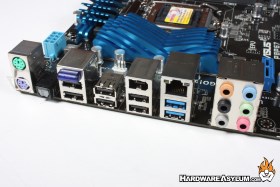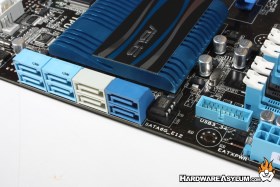Asus P8P67 Standard Motherboard Review
Author: Dennis Garcia
Published: Thursday, May 05, 2011
Board Layout and Features Cont.
You won't find any fancy bench top buttons on the P8P67, instead you get a standard front panel connector fancy green power LED and variety of internal USB and COM headers. In the background you'll see an extremely small processor just below the MCP heatsink. This chip is the TPU processor that controls the auto power up features and TurboV EVO software overclocking package.
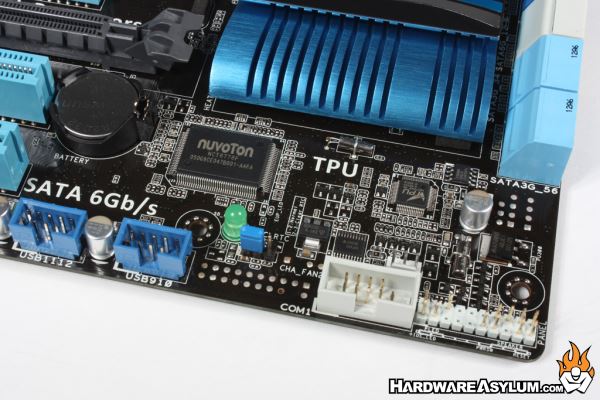
TPU and EPU
To enable the TPU feature you must first enable the hardware switch located under the last PCI Express slot. Once enabled the system will auto tune your processor and memory combo for the best performance short of a manual overclock.
Another onboard hardware switch is called EPU. The EPU system is a real time power saving feature that looks at system load and will adjust power delivery dynamically and moderate power consumption. While these switches appear to do completely different things you can use them at the same time and still expect full system performance when you need it most.
Below is a CPUz shot of what the TPU autoconfig did for our 2600K. 4.4Ghz for flipping a single switch is pretty cool. (your results may vary)
Below is a CPUz shot of what the TPU autoconfig did for our 2600K. 4.4Ghz for flipping a single switch is pretty cool. (your results may vary)
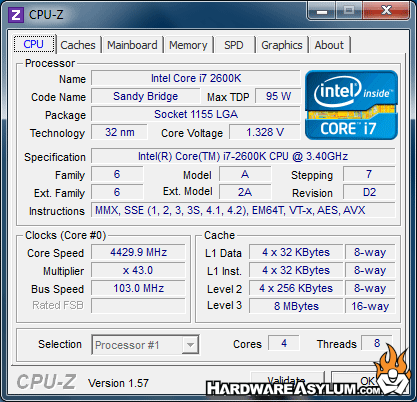
The I/O panel is rather self explanatory. On the panel you will find two PS/2 ports for keyboard and mouse connections. Digital audio, Bluetooth ( 2.1+EDR ), Firewire, USB (both 2.0 and 3.0 standards) Ethernet and 8-channel analog audio.
Internal SATA connections number eight. The light blue connections are SATA3 spec while the white connections follow the SATA6 connections standard direct from the P67 chipset. The remainder dark blue SATA ports are SATA6 compliant and are provided by the onboard Marvell controller.
You may have noticed a single BIOS chip located near the SATA connections and below the internal USB3 panel connector. The P8P67 features a single BIOS chip but is removable in the event of a failed BIOS flash or BIOS corruption.
You may have noticed a single BIOS chip located near the SATA connections and below the internal USB3 panel connector. The P8P67 features a single BIOS chip but is removable in the event of a failed BIOS flash or BIOS corruption.

